GAT 035 Haegue Yang
Paper Leap and Other Movements.
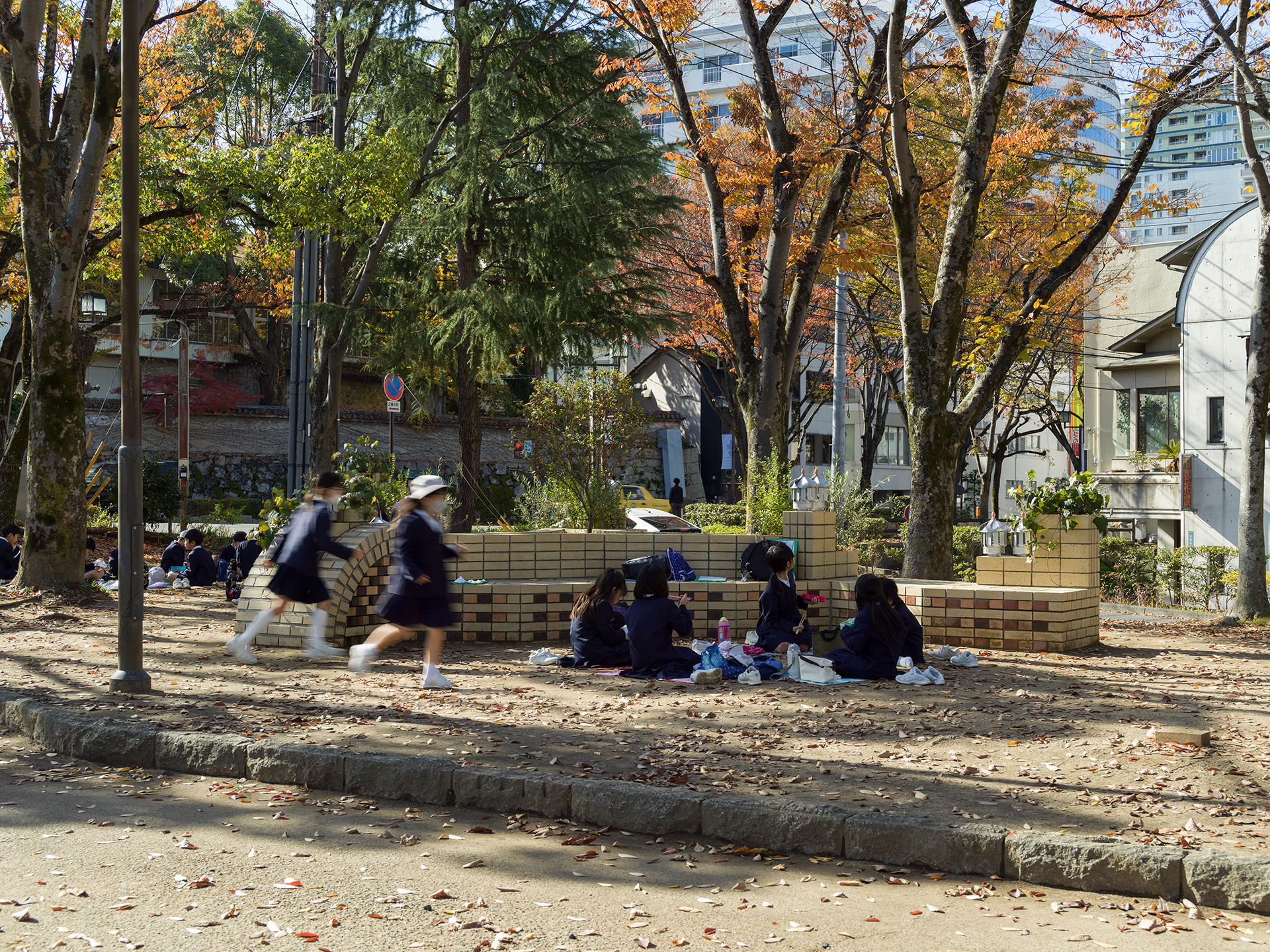
Haegue Yang is an artist who lives and works between Berlin and Seoul. Her latest works were presented at the Okayama Art Summit, which ran from September 30 to November 27, 2022. The following is an excerpt from a talk held on October 5, 2022.
Edited by Ishii Jun’ichiro (ICA Kyoto)
* During this talk, Yang introduced her works in five chapters. Due to space constraints, we will, unfortunately, not be able to present them all in this article.
Mesmerizing Mesh is simply a form of paper collage, which I started researching into around 2019 and 2020.
By research, I mean learning through books, visiting shamans, and practicing the cutting itself in order to get used to the technique of using the knife and getting used to the paper, washi or hanji. When we started to produce after some trial and error, we realized about 40 pieces, 12 pieces of which were presented in a small project room of the gallery in Seoul.

Mesmerizing Mesh, Kukje Gallery, Seoul, 2021
As you can see, it’s a very modest presentation.
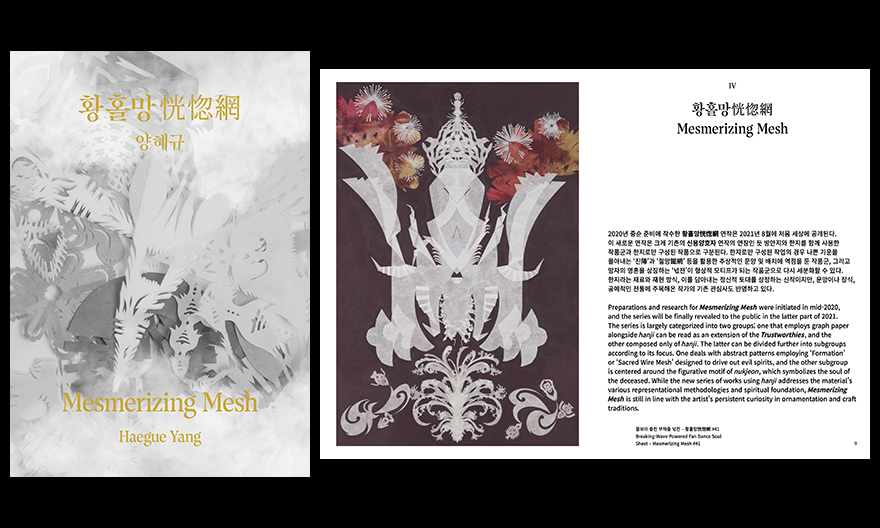
This is the booklet I produced for the launch.
The second show ended on August 20 in Berlin, and I consider that as the first exhibition with Mesmerizing Mesh, whereas I only regard the previous one as a showcase launch.
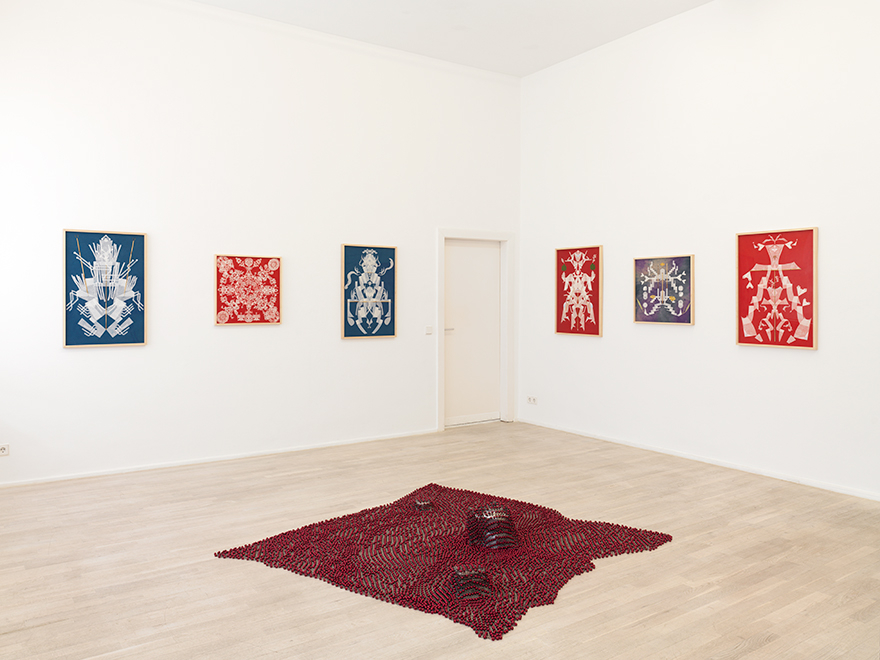
Mesmerizing Mesh – Paper Leap and Sonic Guard, Galerie Barbara Wien, Berlin, 2022
The difference between the launch and the exhibition in Berlin is that my research started to go into Korean shamanism, and I started to look into Shinto traditions, where paper objects also appear.

The second booklet I produced for the Berlin show has more content than the first booklet, especially providing a comparative way of looking into two traditions in parallel.
The final chapter of Mesmerizing Mesh for now is in Okayama [*1]. I had one venue, which is a Shinto shrine. You see these two pieces, left and right, and that was how it was exhibited in Okayama.
[*1] Okayama Art Summit 2022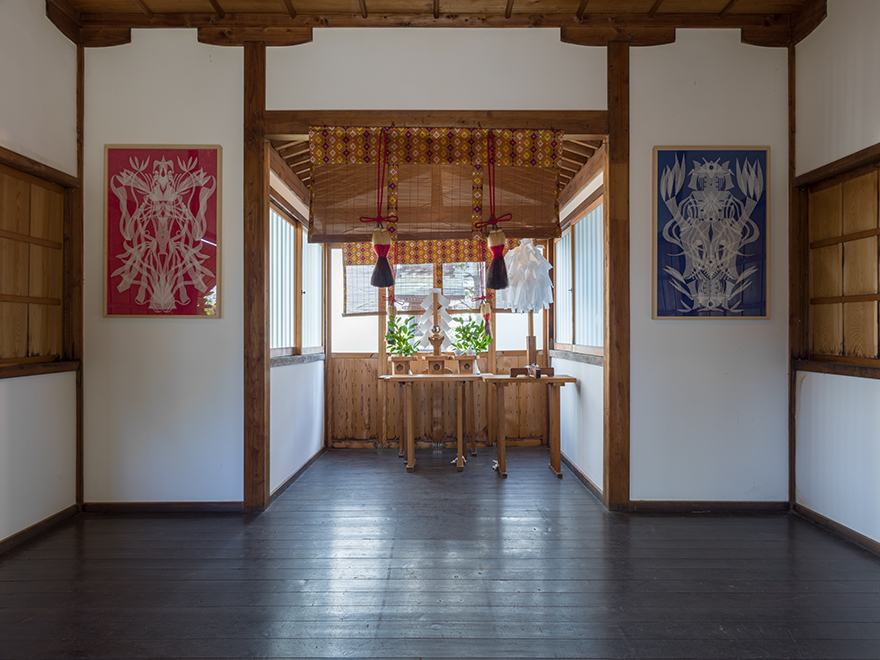
Mesmerizing Mesh, Okayama Art Summit, 2022
There was an additional venue decided on in the last minute by the Artistic Director, Rirkrit Tiravanija. It was right next to another artist’s piece in the park. This was not announced anywhere, but it was also exhibited in Okayama.
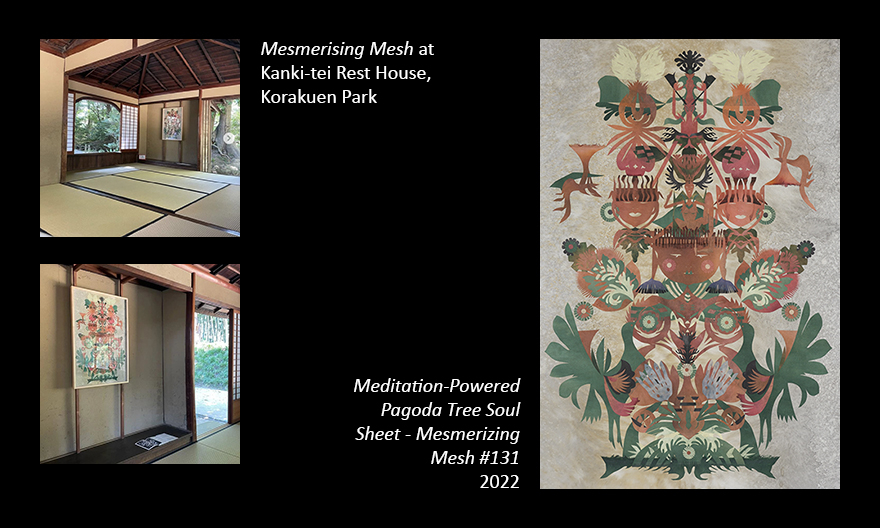
The next sculpture I will now introduce is mostly made of bells. Normally, when a shaman does a ritual like singing and dancing, the shaman would hold a rattle in one hand and a fan in the other. This rattle is a tool that is used from the initiation ritual until the termination of the practice. It’s often associated with shamans.
I called this series “Sonic Sculptures,” and the types I showed in OKAYAMA ART SUMMIT 2022 are named Sonic Ropes. I started with Sonic Rope as a subcategory within “Sonic Sculpture” in the exhibition O₂ and H₂O, at MMCA in Seoul 2020.
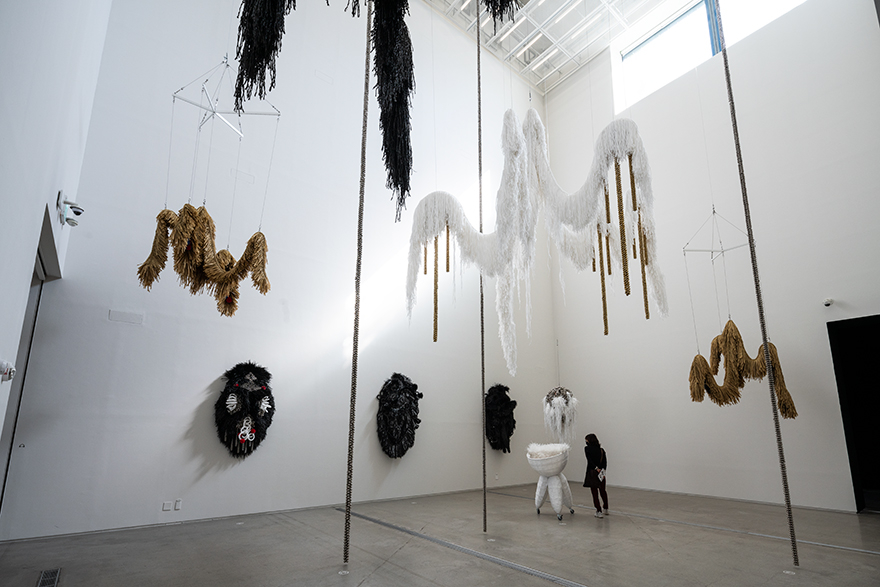
Sonic Ropes, O₂ and H₂O, MMCA, Seoul, 2020
You see three linear ropes dropped from a very high ceiling. It was over 15 meters high.
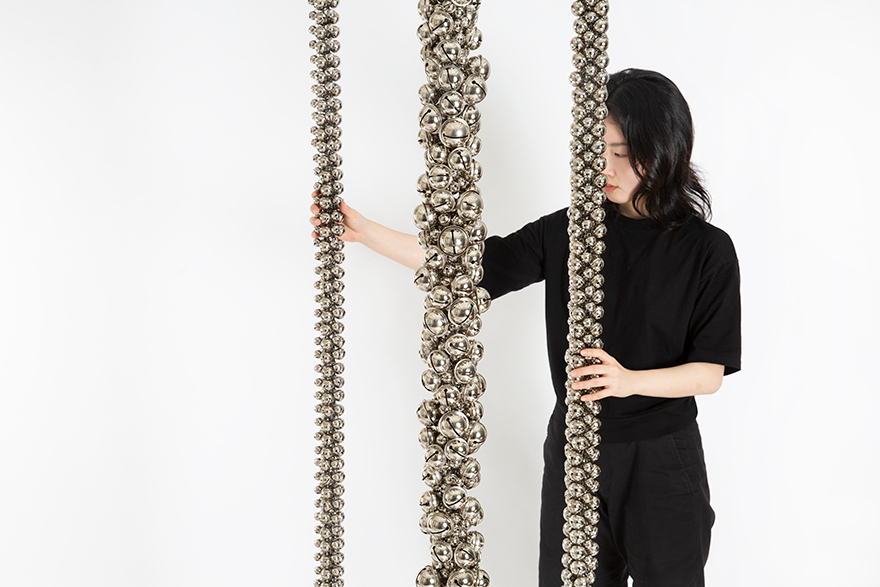
《Sonic Ropes – Silver Hexagon》2020
Maybe this is too micro and detailed, but it started much thinner, the diameter was about 7 cm. In fact, when you cut the rope, the section view actually shows a hexagon. Later, the rope was developed into a dodecagon with a diameter of 11 cm, like Sonic Ropes which I will introduce next.
I also showed Sonic Ropes in the exhibition in Copenhagen called Double Soul. This is an interesting site within the museum building.
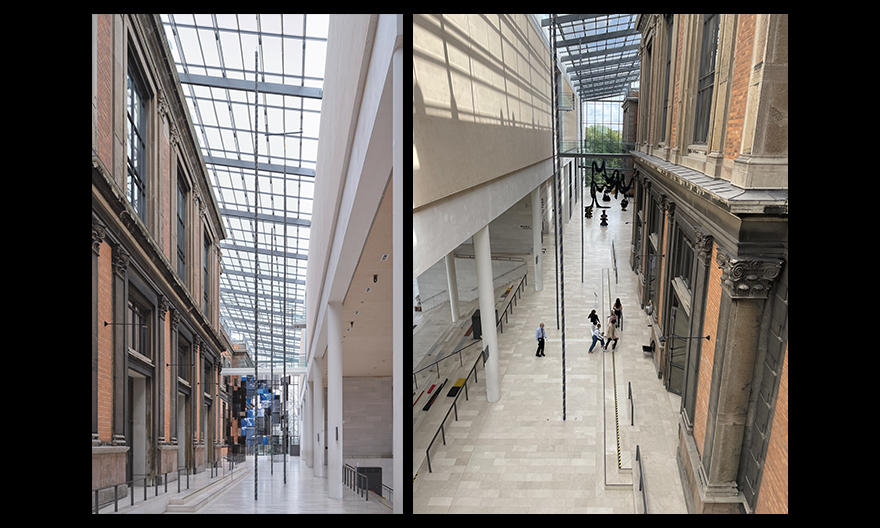
Sonic Celestial Ropes, Double Soul, SMK, Copenhagen, 2022
When looking from the right, you can see two buildings. One is the neoclassical building, the old building of SMK, the National Gallery of Denmark.
On the left, you can see the white building, that’s the new extension. They put the glass ceiling to cover the gap in between, and this is the so-called Sculpture Street, the massive exhibition space between two buildings.
As you can see, in both MMCA and SMK, I used spaces with a dramatically high ceiling. This vertical feeling of ascending and descending is the primary sensation.
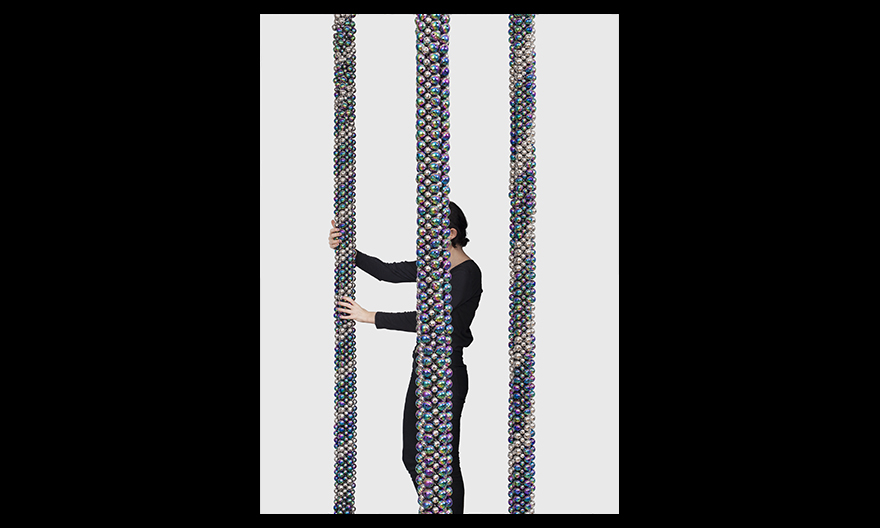
《Sonic Celestial Ropes – Iridescent Dodecagon》2022
Again, it’s a detailed view, and from the hexagon, I actually moved to the dodecagon, meaning you will see 12 of those in each section view. The rope itself became chunkier, and the line became bold.
The next project was presented at M+ in Hong Kong, which was inaugurated in November 2021, and we installed 4 hexagon ropes and 6 dodecagon ropes on multiple floors.
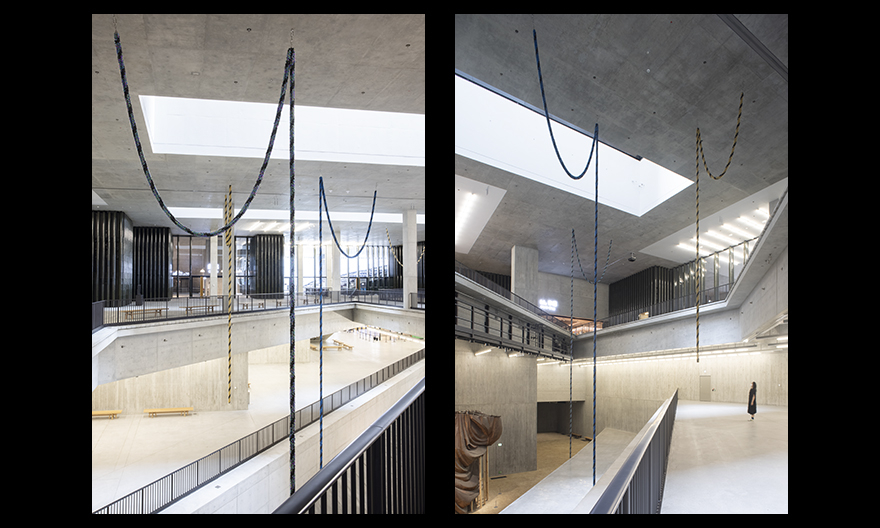
Sonic Rescue Ropes, M+, Hong Kong, 2021-2022
I decided to drape the rope as if casting a fishing line into a pond. I think you would also see the change in color and the weaving pattern, and also the scale of the rope and the ensemble. It was presented in a very singular way at MMCA and SMK, but now they have become an ensemble with thinner and thicker ones, colorful ones, etc., which means, in this case, that the sonic impact, the resonating sound of the rope, is most impactful, not only through the number of the rows, but also the space around it.
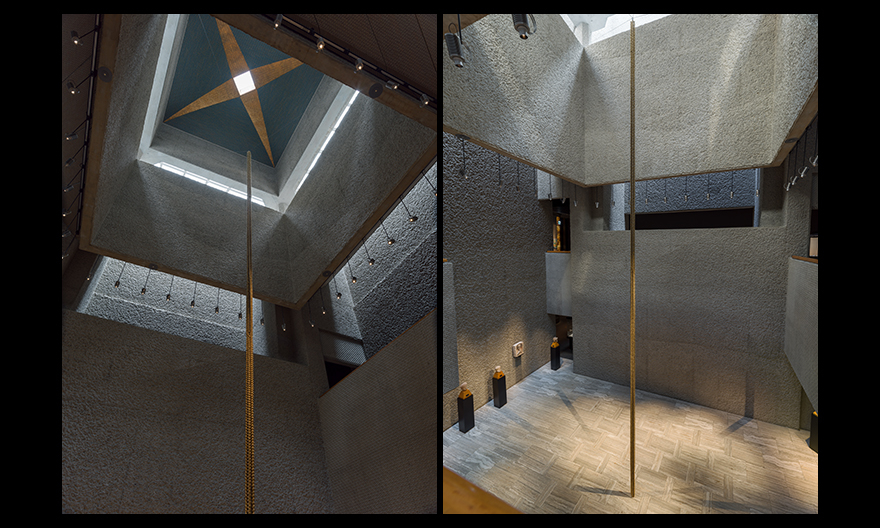
Sonic Cosmic Rope, Okayama Orient Museum, Okayama Art Summit, 2022
Cosmic Rope was installed in Okayama Orient Museum. Many of you have visited and seen it. This singular line was dropped in the center, from again, a space with a very high ceiling.
In Okayama, there is a space called the Index, where each artist submitted a piece that would inform what we eventually presented in the summit. I presented the Sonicwears, and as the title of the pieces suggest, they are wearable sculptures in the exhibition.
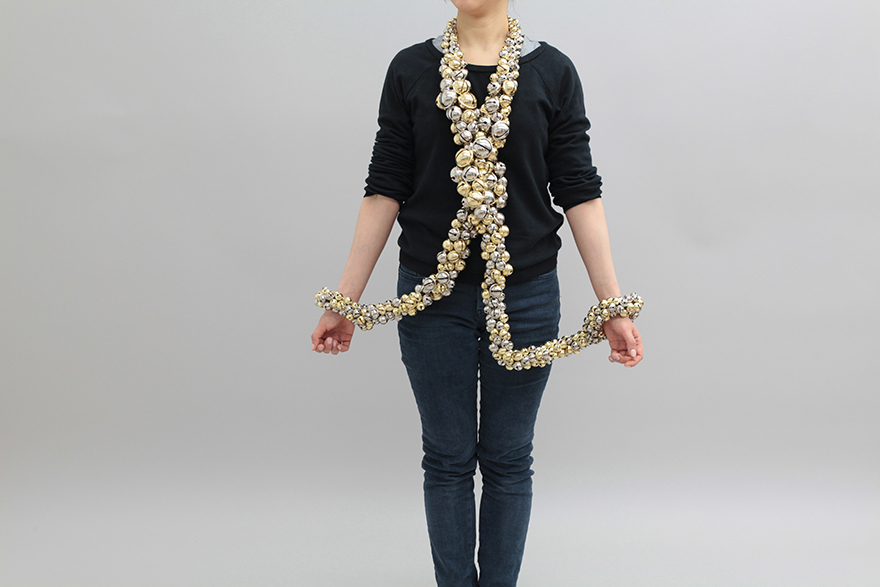
Sonicwear – Scarf with Mitten Ends Connected in the Front, Brass and Nickel Plated, 2013
This is a mitten or a handcuff you could wear alone as a single person, but you could also use the Sonicwears to connect people. There is also a poncho, though it is very difficult to wear by yourself because of the sheer weight of the piece. There are anklets too.
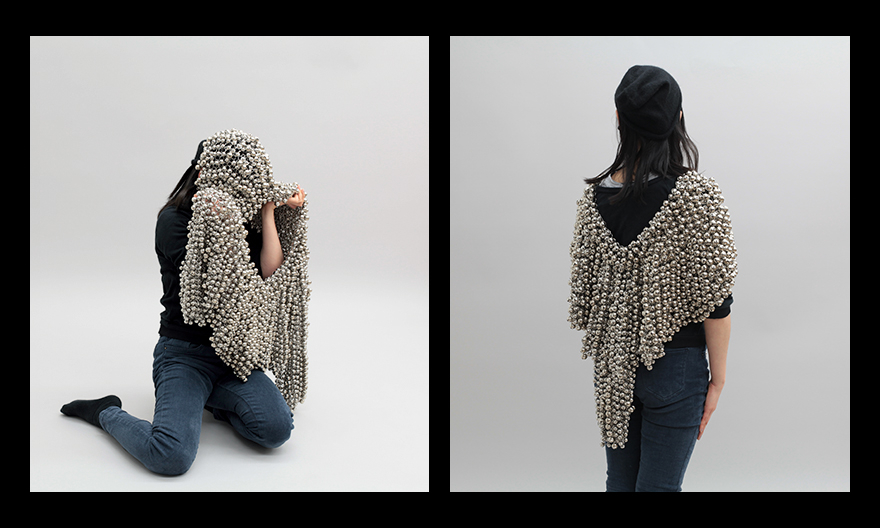
Sonicwear – Poncho, Nickel Plated, 2013
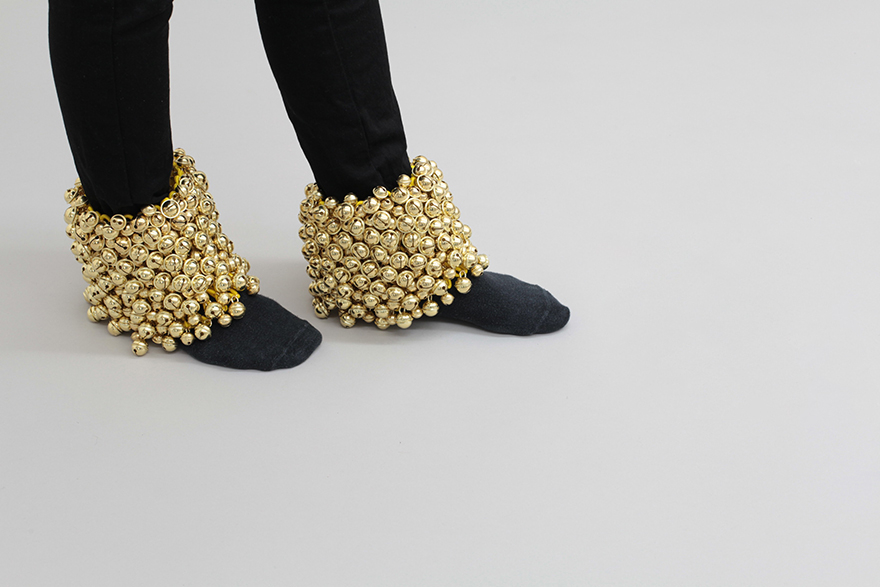
Sonicwear – Anklet, Brass Plated, 2013
The next piece is called Boxing Ballet. In fact, the central reference for the work is the triadic ballet by Oskar Schlemmer (1888-1943) who is known as a sculptor and painter of the Bauhaus. He was strangely enough very much engaged in performing art, jazz music, etc., and one of the most prominent and most celebrated work by him is called Triadisches Ballet, which is a ballet piece.
What you see here on the right side on the bottom is the costume. And as you can see, maybe this piece is costume-dominated. Meaning, it’s a very sculptural piece for a ballet that the dancer can barely move in this sculptural costume. So, “ballet” was used, I would say, in a partially ironic way.
What I was interested in is to create a tracing of the idea of the body that was manifested in the Bauhaus artists. Often that is a very robotic body, not an organic body. Robotic in the sense that it’s a kind of cyborg between the machine and the organic body, and it’s a very futuristic body. They were really interested in social reform. Maybe from today’s view, it looks like a very liberal idea of prosperity and efficiency, but for that time it was a utopian idea of the body.
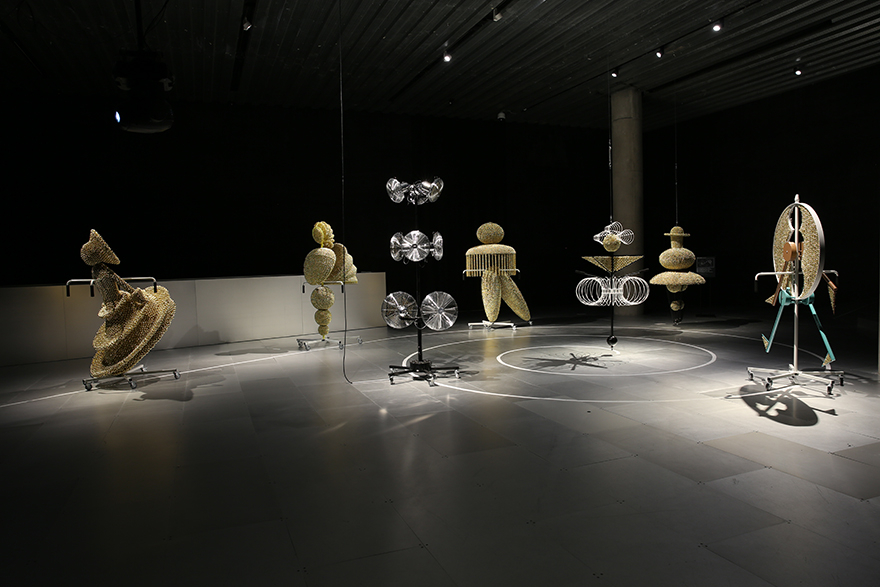
So what I showed in the Index part of Okayama, the brain of the exhibition, was two Sonicwears that you could actually put on your hands.
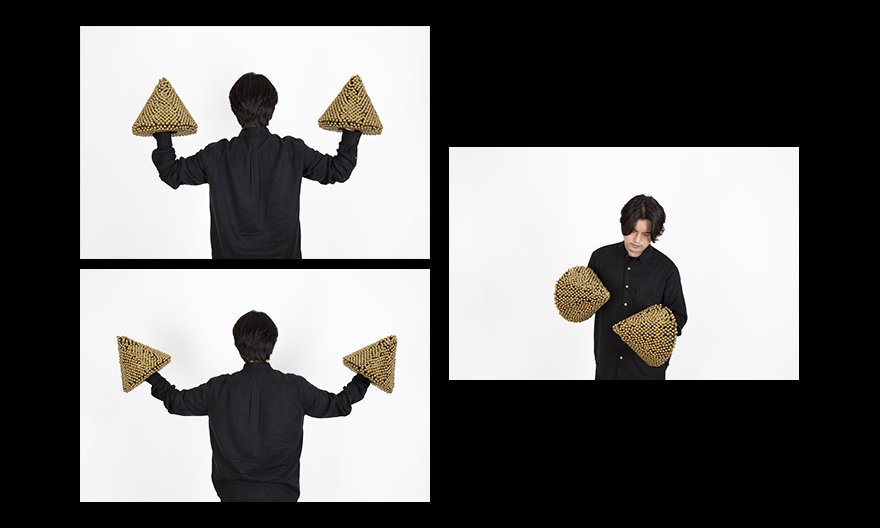
Sonicwear – Gold Conical Hands, 2022
The end part of your body becomes a geometric shape, in this case – a cone. There is an association to the Schlemmer piece where the figures are having this kind of object, either a spherical or conical form that is again, very heavy. It looks very fun, but it’s quite painful.
Now I will go to the brick sculpture.
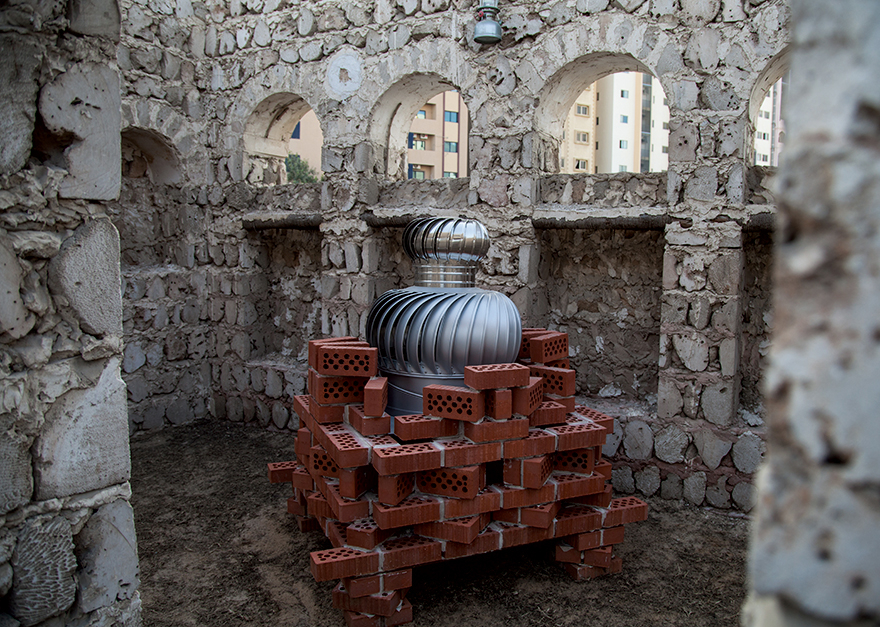
An Opaque Wind, Sharjah Biennale 12: The past, the present, the possible, Sharjah, UAE, 2015
The first time the brick sculpture appeared was in the Sharjah Biennale in the United Arab Emirates. The UAE, as a nation, especially Sharjah, was formed in 1971. It’s a very young nation, so they’re very interested in their heritage.
On one hand, these so-called Gulf countries were born through the discovery of oil. And finally connected with very far seemingly irrelevant countries like Korea, also through oil.
Due to the well-known oil crisis in the 1970s, young and poor countries like Korea desperately needed the dollars. So a lot of Korean workers went to the Gulf and worked as construction workers. Korean companies also got commissions to build harbors, highways, schools, and hospitals.

Their development as a nation is also interconnected with the crisis that another nation was going through. There is this one room I call “the father’s room” that is dedicated to those fathers who came at that period.
Mostly, they were all male and came alone, leaving their families behind, and worked in this country. This practice continues today, not with Korean workers but with Bangladeshis, Filipinos, etc.
There are so many layers in this piece. I could go into six, seven, eight different stages of development because I learned so much through this project, but what I discovered here is mainly construction materials such as brick and the metaphor of wind. Wind is a metaphor that has also become a material for me.
The wind here symbolizes this very seemingly irrelevant connection between those fathers. For them, it’s a personal destiny, but they are mostly unaware of the different times and different fathers and uncles who had very similar destinies. So, the wind somehow is an analogy of these connections, and also it became the power to make this mesmerizing movement of turbine vents that also symbolize the very particular movement of air in this region.
I have been trying to develop this work on different occasions, but because the brickwork costs so much and normally the exhibition period is too short, it doesn’t really fit the normal exhibition. Finally I had the chance to secure the annual outdoor commission of a museum called Serralves in Porto.
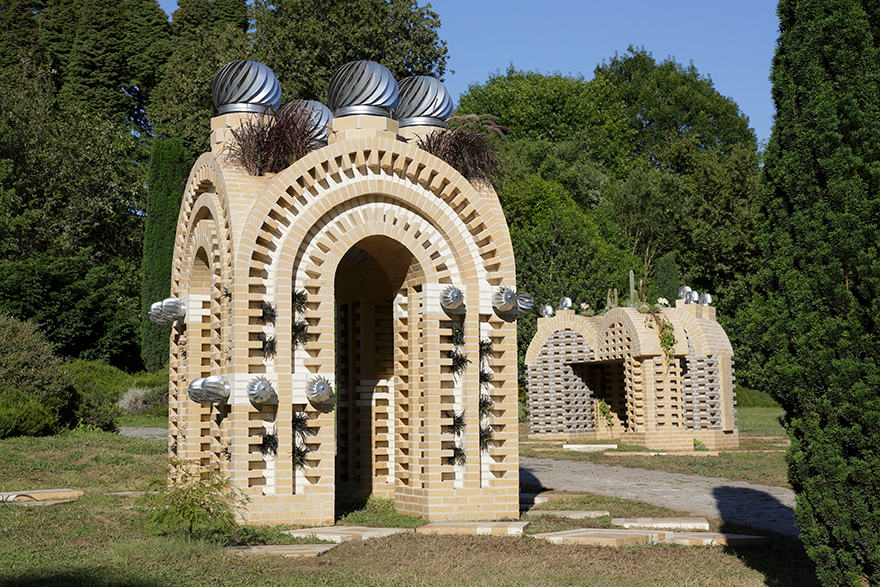
An Opaque Wind Park in Six Folds, Serralves Museum of Contemporary Art, Porto, Portugal, 2016
The tower itself became much more prominent, and also much more sculpturally developed and articulated, but what also entered the piece is the vegetation.
I was looking into brick as a material. It is such an industrial construction material, but at the same time, it’s such a molecular material. As a child of the 1980s, growing up in Korea, industrialization is a part of modernism, one of the agonizing narratives in my life and work.
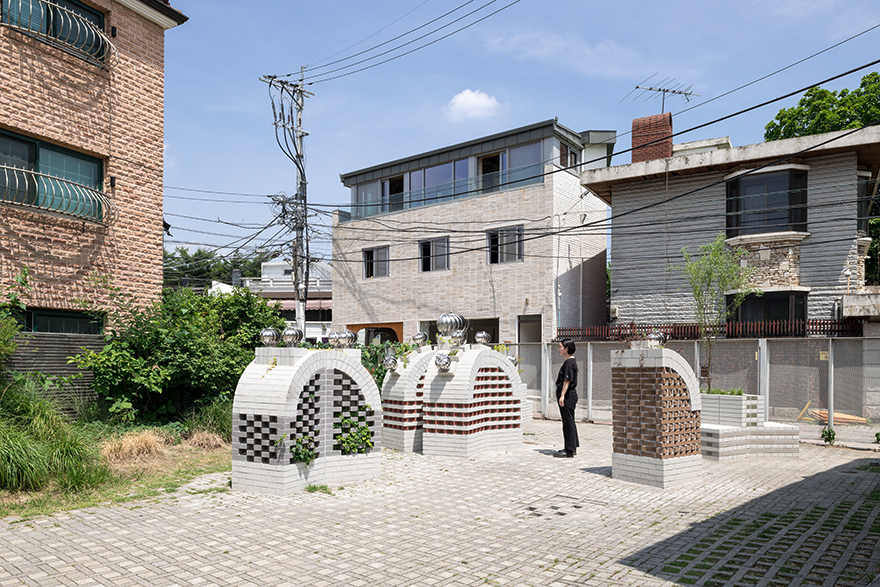
An Opaque Wind Habitat, Kukje Gallery, Seoul, 2022
In this case, it’s not ceramic brick like in Porto. This is concrete brick, cheaper, but I was very astonished by the quality, colors and, let’s say, even the aesthetics of this brick.
The brick sculptures’ body in the original piece in Sharjah was actually empty. It looked like a chimney, and then in Porto, it became a plant pot.
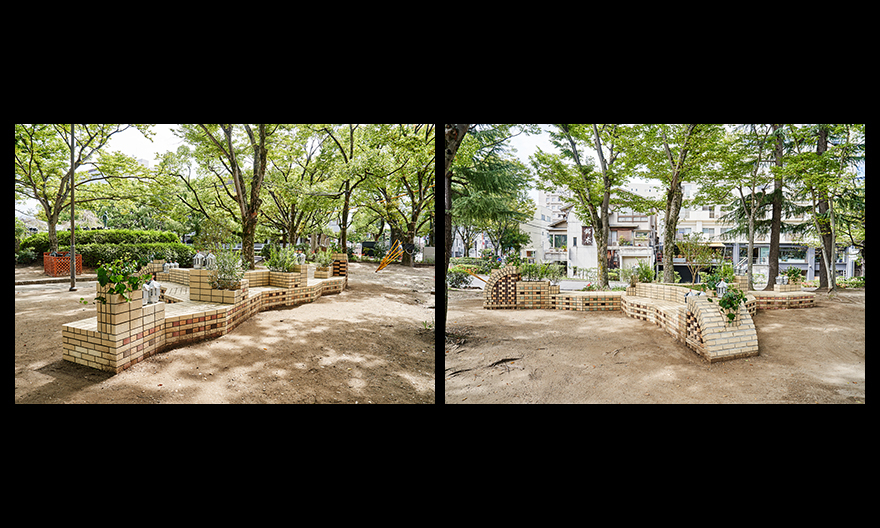
An Opaque Wind – Trifid Seating in Six Folds, Ishiyama Park, Okayama Art Summit, 2022
In Okayama, it became a kind of outdoor furniture. It became a bench, as you see here at Okayama in Ishiyama Park. I mainly chose to make a sculpture so that I could make seats.
It’s become a kind of communal furniture, but outdoor furniture where you can have a view to this beautiful garden, castle, etc.
I hope that the people in Okayama will keep this sculpture there, and that the plants will grow and become a part of the social fabric.
Haegue Yang
Haegue Yang (b. 1971, Seoul) lives and works between Berlin and Seoul. She serves as Vice-Rector of the Städelschule, Frankfurt am Main, where she also graduated as Meisterschüler in 1999. A recipient of the Wolfgang Hahn Prize in 2018 and the 13th Benesse Prize at the Singapore Biennale in 2022, Yang has been the subject of major solo exhibitions at museums around the world, including HAM, Helsinki (2024); National Gallery of Australia, Canberra (2023); Pinacoteca de São Paulo (2023); SMK – The National Gallery of Denmark, Copenhagen (2022); Tate St Ives (2020); MoMA, New York (2019); The Bass, Miami Beach (2019); Museum Ludwig, Cologne (2018); Centre Pompidou, Paris (2016); Leeum Museum of Art, Seoul (2015); Kunsthaus Bregenz (2011); and the South Korea Pavilion, 53rd Venice Biennale (2009), among others. In October 2024, she will have a major survey exhibition at the Hayward Gallery in London.
* This talk was held at the Kyoto University of Arts on October 05, 2022.